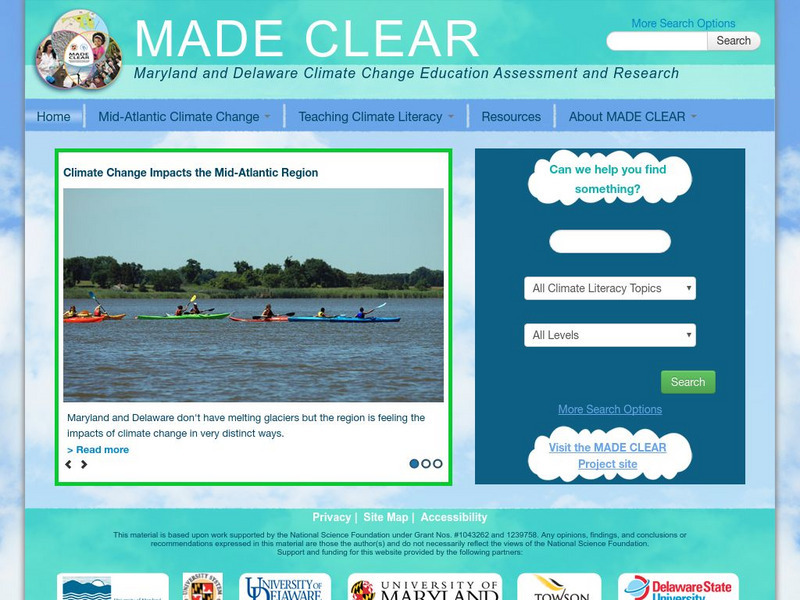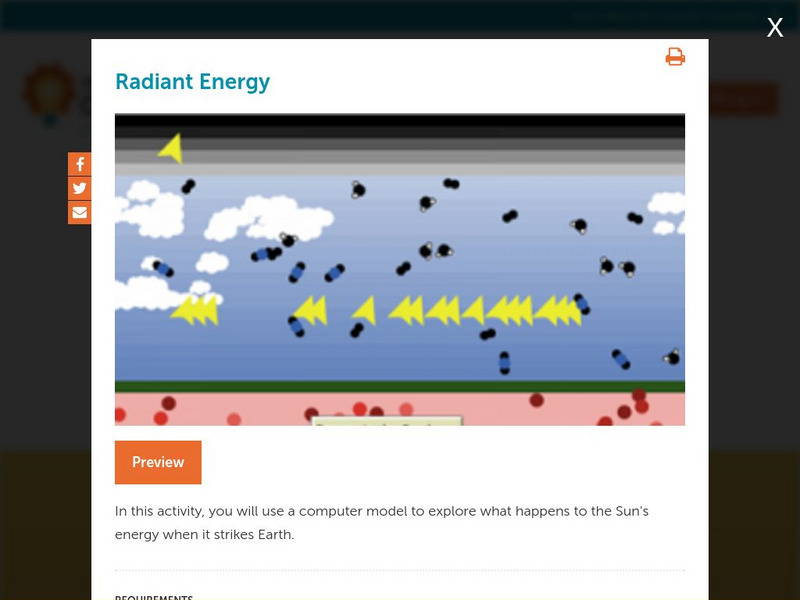Hi, what do you want to do?
University Corporation for Atmospheric Research
Ucar: Learn: The Greenhouse Effect
A detailed overview of the greenhouse effect, with explanations about Earth's atmosphere gases referred to as greenhouse gases, and the factors that influence the heat-trapping ability of a greenhouse. All information is reinforced...
BioEd Online
Bio Ed Online: Fossil Fuels and the Carbon Cycle
In the following lesson students learn how geologists locate fossil fuels by using a straw to extract "core samples" from a model that has different layers. Student sheets are provided in English and in Spanish.
University Corporation for Atmospheric Research
Ucar: Visualizing Weather and Climate
With visualizations, we can see the entire planet from all angles at once. We can see the invisible - such as water vapor in the atmosphere and the way air flows around the world.
Curated OER
Mir Model
Details of Mir's re-entry into the Earth's atmosphere after 15 years in space. Includes information on Mir's mission, configuration, and history.
Idaho State University
Global Wind Systems [Pdf]
A great description of the global scale circulation and heat energy. Discusses a single-cell model, a three-cell model, jet streams and more.
Thinkport Education
Thinkport: Made Clear: How Do Scientists Collect Data?
Find out how scientists continually collect information about the Earth and its atmosphere.
NOAA
Noaa: It All Runs Down Hill [Pdf]
Read how freshwater moving across the surface of the Earth can become polluted and bad for the environment. Create a model that shows how water can become polluted as it flows downhill.
TeachEngineering
Teach Engineering: Air Pollution
Students are introduced to the concept of air quality by investigating the composition, properties, atmospheric layers and everyday importance of air. They explore the sources and effects of visible and invisible air pollution. By...
Concord Consortium
Concord Consortium: Stem Resources: Radiant Energy Flow
A virtual lab to look at the physical features of Earth that affect the amount of the Sun's energy that hits Earth. Students investigate how solar and infrared radiations enters and leaves the atmosphere with this model. Virtual lab...
TeachEngineering
Teach Engineering: Planting Thoughts
Students gain an understanding of the parts of a plant, plant types and how they produce their own food from sunlight through photosynthesis. They also learn about transpiration, the process by which plants release moisture to the...











